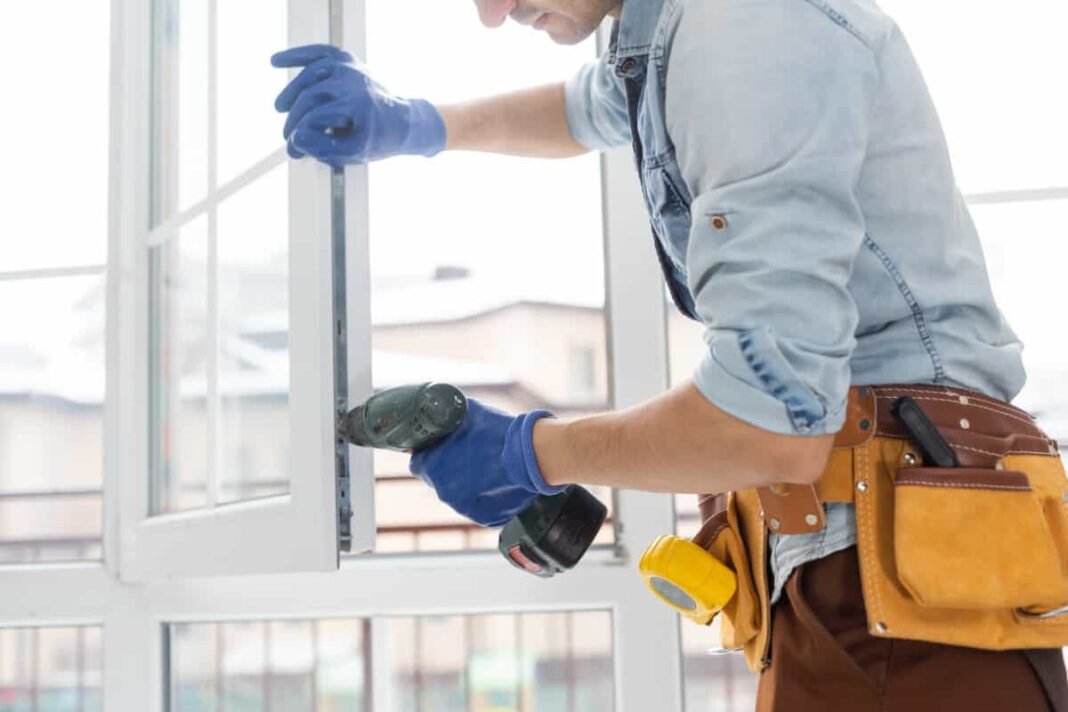Windows are a vital part of any home, providing light, ventilation, and a connection to the outdoors. However, they can also be a source of frustration when issues like drafts, condensation, and leaks arise. Identifying and fixing these common window problems is essential for maintaining a comfortable and energy-efficient home. In this article, we’ll explore practical solutions for addressing these issues, combining personal experiences with expert advice to help you keep your windows in top condition.
Identifying Common Window Problems
Drafts
Drafts are a common issue in many homes, especially during the colder months. They can cause discomfort and lead to higher energy bills as your heating system works harder to maintain a consistent temperature.
Signs of Drafts
- Feeling a cold breeze near windows
- Higher-than-normal energy bills
- Visible gaps or cracks around window frames
Condensation
Condensation occurs when warm, moist air comes into contact with a cooler surface, such as window glass. While a small amount of condensation is normal, excessive moisture can indicate a problem.
Signs of Condensation
- Water droplets on the inside of windows
- Foggy windows
- Mold or mildew growth around windows
Leaks
Leaks are a serious issue that can lead to water damage, mold growth, and structural problems. Identifying and addressing leaks promptly is crucial to protecting your home.
Signs of Leaks
- Water stains or discoloration around windows
- Peeling paint or wallpaper
- Damp or wet areas on walls or floors near windows
Fixing Drafts
Sealing Gaps and Cracks
One of the most effective ways to fix drafts is by sealing gaps and cracks around windows. Use caulk or weatherstripping to seal any visible openings.
Caulking
- Materials Needed: Caulk, caulk gun, putty knife
- Steps:
- Clean the area around the window frame.
- Apply caulk along the edges of the frame, filling in any gaps.
- Smooth the caulk with a putty knife for a clean finish.
- Allow the caulk to dry completely.
Weatherstripping
- Materials Needed: Weatherstripping tape, scissors
- Steps:
- Measure the length of the window frame.
- Cut the weatherstripping to the appropriate length.
- Apply the weatherstripping to the frame, pressing firmly to ensure a tight seal.
Addressing Condensation
Improving Ventilation
Improving ventilation is key to reducing condensation. Ensure that your home has adequate airflow by using exhaust fans, opening windows, and utilizing dehumidifiers.
Using Dehumidifiers
- Benefits: Dehumidifiers remove excess moisture from the air, reducing condensation on windows.
- Placement: Place dehumidifiers in rooms where condensation is most common, such as bathrooms and kitchens.
Insulating Windows
Adding insulation to your windows can help prevent condensation by keeping the interior glass surface warmer.
Installing Window Insulation Film
- Materials Needed: Window insulation film, double-sided tape, hairdryer
- Steps:
- Clean the window glass thoroughly.
- Apply double-sided tape around the edges of the window frame.
- Cut the insulation film to size and press it onto the tape.
- Use a hairdryer to shrink the film, creating a tight seal.
Fixing Leaks
Inspecting for Damage
Regularly inspect your windows for signs of damage that could lead to leaks. Look for cracks, gaps, and deteriorated seals.
Repairing or Replacing Window Seals
If you notice damaged seals, it’s important to repair or replace them promptly.
Repairing Seals
- Materials Needed: Silicone sealant, caulk gun
- Steps:
- Remove any old or damaged sealant.
- Clean the area thoroughly.
- Apply new silicone sealant along the edges of the window.
- Smooth the sealant with a putty knife and allow it to dry.
Replacing Seals
If the seals are beyond repair, consider replacing them entirely. This may involve removing the window sash and installing new seals, which can be a more complex process.
Personal Narrative: Tackling Window Issues in My Home
As a homeowner, I’ve faced my fair share of window problems. One winter, I noticed a persistent draft in my living room that made the space uncomfortably cold. After inspecting the windows, I found gaps around the frames. I used caulk and weatherstripping to seal the gaps, and the difference was immediate. The room was warmer, and my energy bills dropped noticeably.
Another issue I encountered was condensation in my bathroom. Every morning, the windows would be covered in moisture, leading to mold growth around the frame. To combat this, I installed a dehumidifier and improved ventilation by installing an exhaust fan. These steps significantly reduced the condensation and prevented further mold growth.
Forward-Looking Analysis: Preventing Future Window Problems
Preventing window problems is all about regular maintenance and proactive measures. Schedule periodic inspections to catch issues early, and consider investing in high-quality, energy-efficient windows that are designed to minimize drafts, condensation, and leaks.
Routine Maintenance Tips
- Clean Windows Regularly: Keep windows clean to prevent dirt and grime buildup, which can contribute to seal deterioration.
- Inspect Seals Annually: Check window seals at least once a year and repair or replace any damaged areas.
- Improve Insulation: Add window insulation film or consider upgrading to double or triple-pane windows for better energy efficiency.
Conclusion
Identifying and fixing common window problems like drafts, condensation, and leaks is essential for maintaining a comfortable, energy-efficient home. By following these practical tips and solutions, you can address these issues effectively and prevent them from recurring. Regular maintenance and proactive measures will keep your windows in top condition, ensuring your home remains secure, efficient, and comfortable year-round.


